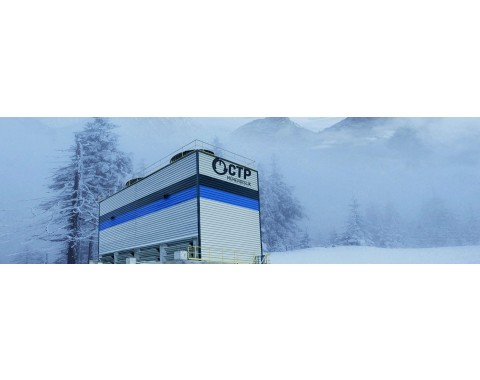- Conductivity
Objective:
Used to monitor and control blowdown requirements.
What is Blowdown?
Blowdown is the process of removing some of the water from the cooling tower system in a controlled manner. This is done to reduce the concentration of minerals and contaminants that accumulate in the remaining water as the water evaporates. If blowdown is not performed, these deposits can cause negative consequences such as corrosion, scaling, reduced system efficiency and system wear.
Possible Problems
Excessive Blowdown: If excessive blowdown is performed when it is not necessary, it can lead to corrosion and waste of water and treatment chemicals.
Insufficient Blowdown: If blowdown is not performed when it is required, it can lead to limescale deposits and excessive contamination. This can lead to cooling system failure.
Solution Suggestions:
If Conductivity is Low: Blowdown should be reduced (Note: Reducing blowdown will increase chemical levels).
If Conductivity is High: Blowdown should be increased. (Note: Increasing blowdown will decrease chemical levels.)
Automated Systems:
Today, line-type devices are used that can measure the online conductivity of the system fluid. Depending on the size of the system and the conductivity level, enough water is drained and replaced with fresh water automatically. In this way, the conductivity level of the system can be kept at the desired level at all times.
Important Note:
In automatic conductivity measurement and blowdown systems, the sensors need to be checked regularly due to the risk of contamination or clogging. Inaccurate measurements can result in excessive chemical or water losses.
- Total Alkalinity (Calcium Hardness)
Objective:
Used to calculate the Langelier Saturation Index (LSI) to monitor calcium carbonate calcification potential.
Possible Problems:
Increased total alkalinity (hardness) can cause scale deposits and excessive fouling, which can reduce system efficiency and lead to failures.
Solution Suggestions:
Blowdown can be increased to prevent hardness increase.
Alkalinity can be kept under control by feeding acid.
- pH
Objective:
To calculate the Langelier Saturation Index (LSI) to monitor calcium carbonate scaling potential.
To monitor acid feed control.
Possible Problems:
Low pH: Can cause corrosion, iron deposits and equipment failure.
High pH: Can cause scaling in heat transfer areas.
Solution Suggestions:
If pH is High and No Acid is Used: Blowdown should be increased.
If pH is High or Low and Acid is Used: Problems in the acid feed system must be fixed.
- Chlorides
Objective:
Used to calculate cycles of concentration (unless elevated by chlorine-based biocides) and to monitor the corrosiveness of water.
Potential Problems:
High chloride levels increase corrosivity in materials such as mild steel, copper and stainless steels.
Solution Suggestions:
If chloride levels are high, the blowdown should be increased.
- Silica
Objective:
Used to calculate concentration cycles and monitor the potential for silica scale formation.
Potential Problems:
High silica levels can lead to silica scale formation.
Solution Suggestions:
If silica levels are high, the bluff should be increased.
- Inhibitory Actives like Phosphate, Phosphonate, Azole, Zinc
Objective:
Used to monitor active scale and corrosion inhibitor levels.
Possible Problems:
Low Inhibitor Levels: Can cause scale deposits and corrosion.
High Inhibitor Levels: Can cause deposits that can lead to wasted chemicals and system failure.
Solution Suggestions:
If Inhibitor Levels are Low: Feed rate should be increased.
If Inhibitor is High: The feed rate should be reduced.
Note: The influence of other factors on the inhibitor level should be considered. For example, if phosphate requirements increase in a soft water program, it should be checked for hard water.
- Tracers (PTSA, Molybdenum)
Objective:
A substance used to monitor product levels.
What is Tracer?
Tracer is a substance used in water treatment systems to monitor the flow or behavior of water. It is added to water and its movement through the system is tracked to collect data on how the water is distributed, where it reaches or how it performs in the system. Tracers are used to understand and optimize the flow of water, especially in large water systems, pipelines or industrial processes.
Possible Problems:
Low Tracer Levels: May indicate low product dosage, which can lead to scale deposits and corrosion.
High Tracer Levels: May indicate high product dosage, leading to wasted product, potential deposits and corrosion.
Solution Suggestions:
If Tracer and Inhibitory Actives are Low: Feed rate should be increased.
If Tracer and Inhibitory Actives are High: Feed rate should be reduced.
Note: The influence of other factors on the tracer level should be considered.
